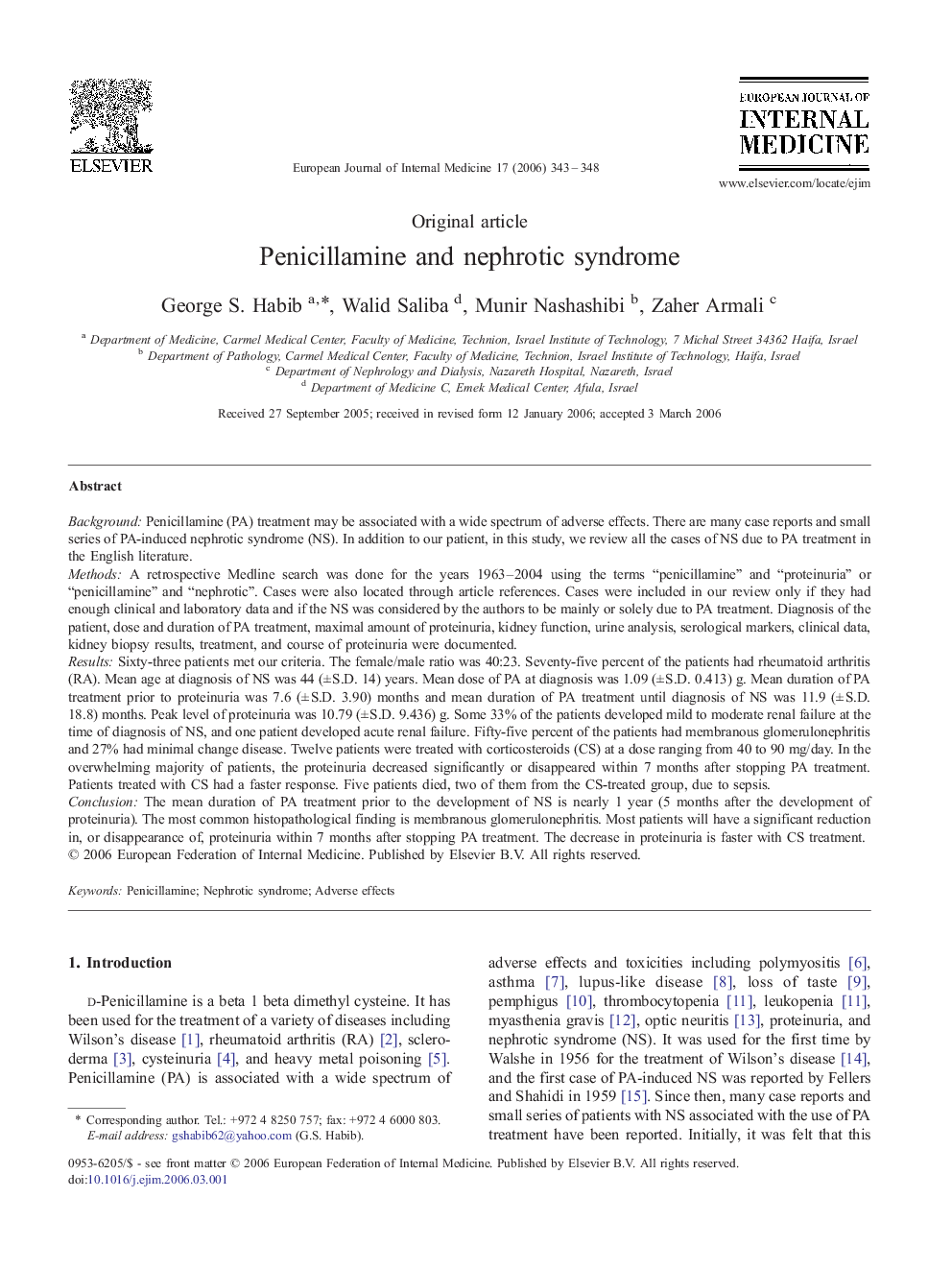| کد مقاله | کد نشریه | سال انتشار | مقاله انگلیسی | نسخه تمام متن |
|---|---|---|---|---|
| 3468619 | 1596620 | 2006 | 6 صفحه PDF | دانلود رایگان |

BackgroundPenicillamine (PA) treatment may be associated with a wide spectrum of adverse effects. There are many case reports and small series of PA-induced nephrotic syndrome (NS). In addition to our patient, in this study, we review all the cases of NS due to PA treatment in the English literature.MethodsA retrospective Medline search was done for the years 1963–2004 using the terms “penicillamine” and “proteinuria” or “penicillamine” and “nephrotic”. Cases were also located through article references. Cases were included in our review only if they had enough clinical and laboratory data and if the NS was considered by the authors to be mainly or solely due to PA treatment. Diagnosis of the patient, dose and duration of PA treatment, maximal amount of proteinuria, kidney function, urine analysis, serological markers, clinical data, kidney biopsy results, treatment, and course of proteinuria were documented.ResultsSixty-three patients met our criteria. The female/male ratio was 40:23. Seventy-five percent of the patients had rheumatoid arthritis (RA). Mean age at diagnosis of NS was 44 (± S.D. 14) years. Mean dose of PA at diagnosis was 1.09 (± S.D. 0.413) g. Mean duration of PA treatment prior to proteinuria was 7.6 (± S.D. 3.90) months and mean duration of PA treatment until diagnosis of NS was 11.9 (± S.D. 18.8) months. Peak level of proteinuria was 10.79 (± S.D. 9.436) g. Some 33% of the patients developed mild to moderate renal failure at the time of diagnosis of NS, and one patient developed acute renal failure. Fifty-five percent of the patients had membranous glomerulonephritis and 27% had minimal change disease. Twelve patients were treated with corticosteroids (CS) at a dose ranging from 40 to 90 mg/day. In the overwhelming majority of patients, the proteinuria decreased significantly or disappeared within 7 months after stopping PA treatment. Patients treated with CS had a faster response. Five patients died, two of them from the CS-treated group, due to sepsis.ConclusionThe mean duration of PA treatment prior to the development of NS is nearly 1 year (5 months after the development of proteinuria). The most common histopathological finding is membranous glomerulonephritis. Most patients will have a significant reduction in, or disappearance of, proteinuria within 7 months after stopping PA treatment. The decrease in proteinuria is faster with CS treatment.
Journal: European Journal of Internal Medicine - Volume 17, Issue 5, August 2006, Pages 343–348